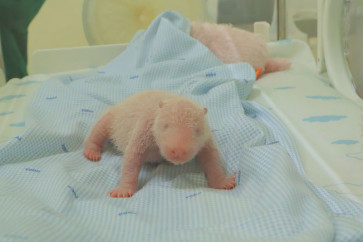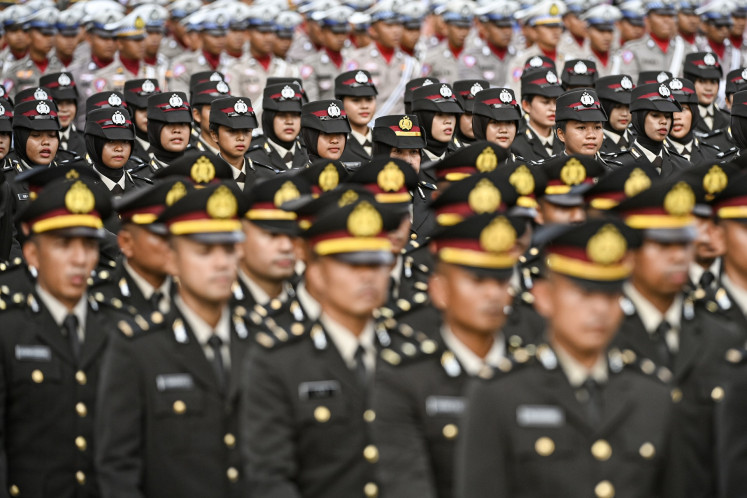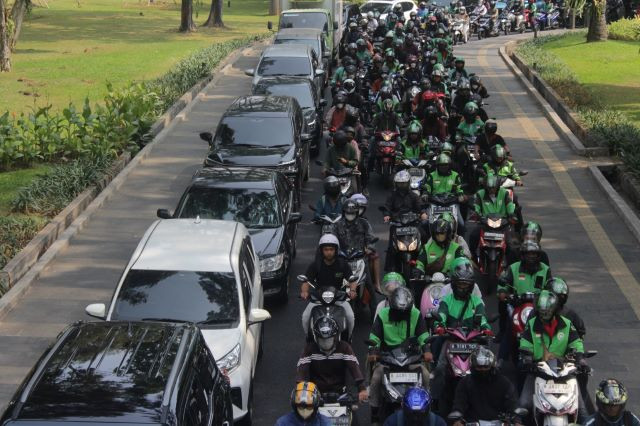Popular Reads
Top Results
Can't find what you're looking for?
View all search resultsPopular Reads
Top Results
Can't find what you're looking for?
View all search resultsBatik makers packing in as imitations flood market
Change text size
Gift Premium Articles
to Anyone
 Workers make traditional batik cloth on Monday at the
Batik Ismoyo workshop in Lumajang, East Java. The
batik house focuses on promoting Lumajang regency’s
unique motifs, including ones inspired by the banana,
which have been exported to Singapore and Malaysia.
The banana-themed batik textiles sell for between Rp
150,000 (US$9.34) and Rp 4.8 million each. (Antara/Irfan Sumanjaya)
Workers make traditional batik cloth on Monday at the
Batik Ismoyo workshop in Lumajang, East Java. The
batik house focuses on promoting Lumajang regency’s
unique motifs, including ones inspired by the banana,
which have been exported to Singapore and Malaysia.
The banana-themed batik textiles sell for between Rp
150,000 (US$9.34) and Rp 4.8 million each. (Antara/Irfan Sumanjaya)
I
ndonesia has seen a steep decline in the number of artisanal batik producers over the past four years across key production centers from Java to Sumatra, as pressure mounts from a surge of mass-produced batik-like fabrics, most of which are imported.
Batik artisan Ahmad Failasuf from Pekalongan, Central Java, struggles to compete with mass-produced batik and to find young workers to rejuvenate his business.
In the business for more than a decade, Ahmad told The Jakarta Post that consumers were increasingly turning to batik-like fabrics as a cheaper option amid weakening spending power in the country.
Read also: RI consumers trading down as economic strain persists
Batik-like fabrics are typically mass-produced through printing, allowing producers to offer inexpensive imitations that resemble traditional batik.
In contrast, the production of genuine batik is more time-consuming, involving artisanal techniques like stamping or hand-drawing, with the resulting products referred to as batik cap (stamped batik) and batik tulis (written batik), respectively.
Both of the artisanal methods use wax, but the hand-drawn batik is the more labor-intensive process, where intricate patterns are drawn directly onto the cloth using a tool called a canting, while the stamping method allows for replicating a pattern using copper stamps.

















